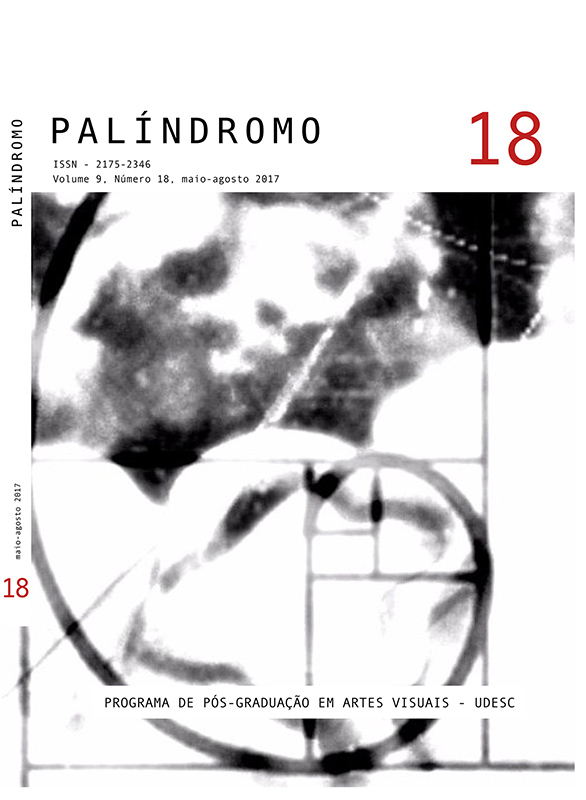The sunrise and the afterglow of lyrical melancholy in the pictorial narrative of Yuli Klever
DOI:
https://doi.org/10.5965/2175234609182017164Keywords:
lyricism, romanticism, pictorial narrative, Yuli KleverAbstract
The aim of this text is to study the poetics achieved in the pictorial narrative of Iuli Klever (1850-1924) due to his use of the elements and resources of Romanticism. We try to understand, through the creative profile of this artist, whether such works bring with them a greater overlap of romanticism in the face of lyricism, or if lyricism overlaps with Romanticism, the former being a characteristic of the latter. To do so, we first performed a description of the Romantic worldview, which was motivated by another aesthetic, appreciated to expose the human being involved in his own feelings and thoughts, and presented a remarkable appreciation for the landscape associated with the poetics required for expressive originality. In a second moment, we find that although the artist uses all the elements of Romanticism in his pictorial narratives, like the mythical, because of the enchantment of the form and the colors of the works occurs the prevalence of lyricism in front of the other characteristics of Romanticism. We also verify that in all his works the sky stands out as the essential character, from where all the distribution of colors and forms is projected to the landscape and the other characters.
Downloads
References
BARRELL, John. The Dark Side of the Landscape: The Rural Poor in English Painting 1730-1840. Cambridge: Cambridge University Press, 1980.
BAUDELAIRE, Charles. L’œuvre et la vie d’Eugène Delacroix. In: L’Art Romantique. Paris: Louis Conard, Libraire-Éditeur, 1885 (Oeuvres Completes, v. 4)
______. Salon de 1859. In: Curiosités Esthétiques. Paris: Michel Lévy Frères, Libraries Éditeurs, 1869.
BENJAMIN, Walter. Paris, capitale du XIXe siècle. In: Le Livre des passages. Paris: Ed. Du Cerf, 1986.
БЕНУА, Александр Н. История русской живописи в 19 веке. М.: Республика, 1995. [BENOIS, Aleksandr N. A história da arte russa no século XIX. Moscou: República, 1995].
BERMINGHAM, Ann. Landscape and Ideology: The English Rustic Tradition, 1740-1860. Berkeley: University of California Press, 1986.
CAMERON, Euan. Enchanted Europe: Superstition, Reason, and Religion, 1250-1750. Chippenham, Wiltshire: Oxford University Press, 2010.
ECO, Umberto. História das terras e lugares lendários. Rio de Janeiro: Record, 2013.
FERRIS, David. Silent Urns: Romanticism, Hellenism, Modernity. Stanford, California: Stanford University Press, 2000.
FLORENSKIJ, Pavel. Il simbolo e la forma: scritti di filosofia della scienza. Torino: Bollati Boringhieri, 2007.
______. Lo spazio e il tempo nell’arte. A cura di N. Misler. Milano: Adelphi, 1995.GOETHE, Johann Wolfgang von. “Erlkönig.” In: Poetische Werke. Berlin: Aufbau, 1960, vol. 1.
GOLDMAN, Bernard. Realist Iconography: Intent and Criticism. In: The Journal of Aesthetics and Art Criticism. v. 18, n. 2, p. 183-192, 1959.
MOSS, Armand. Baudelaire et Delacroix. Paris: Nizet, 1973.
NOVAK, Barbara. American Painting in the Nineteenth Century: realism, idealism, and the American experience. New York: Praeger, 1969.
______. Nature and Culture. American Landscape and Painting, 1825-1875. New York: Oxford University Press, 1980.
RAND, Ayn. The Romantic Manifesto: A Philosophy of Literature. New York: A Signet Book, 1975.
RUSSELL, Bertrand. História da filosofia ocidental. Livro 3. A filosofia moderna. Rio de Janeiro: Nova Fronteira, 2015.
SHELLEY, P. B. “The Wandering Poet” In: Selections from the Poems of Percy Bysshe Shelley. Edited by A. Hamilton Thompson, M.A., F.S.A. Cambridge: University Press, 1923.
STOKSTAD, Marilyn. Art History. 3rd ed. New Jersey: Pearson/Prentice Hall, 2008.
WORDSWORTH, William. The Lyrical Ballads. In: Lyrical Ballads with Pastoral and other Poems, in two volumes. Vol. I. London: T. N. Longman and O. Rees Publisher, 1802.
Downloads
Published
How to Cite
Issue
Section
License
Copyright (c) 2017 Palíndromo

This work is licensed under a Creative Commons Attribution 4.0 International License.
COPYRIGHT STATEMENT
The articles published by the magazine are free to use, intended for academic and non-commercial applications. Copyright is all assigned to the magazine. The articles whose authors are identified represent the expression from the point of view of their authors and not the official position of Palíndromo Magazine. The author (s) commits to whenever they publish material referring to the article published in Palíndromo mention this publication as follows:
This article was originally published by Palíndromo magazine in its volume (place the volume), number (place the number) in the year of (place the year) and can be accessed at: http://www.revistas.udesc.br/index.php/palindromo


